Slaves and slave owners. Human trafficking in the modern world
Only from Russia and the countries of Eastern Europe at least 175 thousand people “disappear” every year. In total, every year in the world, at least 4 million people become victims of slave traders, most of whom are citizens of underdeveloped Asian and African countries. Traders of "living goods" receive huge profits, amounting to many billions of dollars. In the illicit market, “live goods” is the third in terms of profitability after drugs and weapons. In developed countries, the majority of people who have fallen into slavery are represented by illegally held captive women and girls who have been forced or inclined to engage in prostitution. However, a certain proportion of modern slaves are also made up of people who are forced to work for free at agricultural and construction sites, industrial enterprises, and also in private households as domestic servants. Much of the modern slaves, especially those from African and Asian countries, are forced to work free of charge within the “ethnic enclaves” of migrants that exist in many European cities. On the other hand, the scale of slavery and the slave trade is much more impressive in the countries of West and Central Africa, in India and Bangladesh, in Yemen, Bolivia and Brazil, on the islands of the Caribbean, in Indochina. Modern slavery is so large and diverse that it makes sense to talk about the main types of slavery in the modern world.
Sex slavery
The most widespread and, perhaps, widely reported phenomenon of the sale of “live goods” is associated with the supply of women and girls, as well as young boys, to the sex industry. Given the special interest that people have always had in the field of sexual relations, sexual slavery is widely covered in the world press. The police in most countries of the world fight against illegal brothels, periodically release people illegally detained there and bring to justice the organizers of a profitable business. In European countries, sexual slavery has a very large scale and is connected, first of all, to the coercion of women, most often from economically unstable countries of Eastern Europe, Asia and Africa, to prostitution. So, only in Greece 13 000 - 14 000 sex slaves from the CIS, Albania and Nigeria illegally work. In Turkey, the number of prostitutes is about 300 of thousands of women and girls, and in total in the world “priestesses of paid love”, there are at least 2,5 million people. A very large part of them were forced into prostitutes and forced to do this under the threat of physical violence. Women and girls are supplied to the brothels of the Netherlands, France, Spain, Italy, other European countries, the USA and Canada, Israel, the Arab countries, and Turkey. For most European countries, the main sources of income for prostitutes are the republics of the former USSR, primarily Ukraine and Moldova, Romania, Hungary, Albania, as well as the countries of West and Central Africa - Nigeria, Ghana, Cameroon. A large number of prostitutes come to the countries of the Arab world and Turkey, again, from the former CIS republics, only more likely from the Central Asian region - Kazakhstan, Kyrgyzstan, Uzbekistan. Women and girls are lured to European and Arab countries, offering vacancies to waitresses, dancers, animators, models, and promising decent amounts of money for performing simple duties. Despite the fact that in our age of information technology, many girls are already aware that many applicants for such vacancies are turned into slavery abroad, much of them are confident that they will be able to avoid this fate. There are those who theoretically understand that they can be expected abroad, but they don’t represent how cruel their treatment in brothels can be, how ingenious customers are in humiliating human dignity, and sadistic mockery. Therefore, the influx of women and girls to Europe and the countries of the Middle East is not waning.
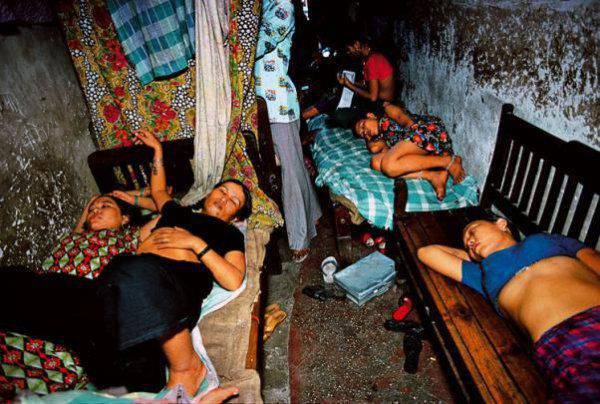
By the way, a large number of foreign prostitutes also work in the Russian Federation. It is prostitutes from other states who have their passports taken away and who are illegally staying on the territory of the country, most often they are the most real “living commodity”, since citizens of the country are still harder to be forced into prostitution. Among the main countries - suppliers of women and girls to Russia, it is possible to name Ukraine, Moldova, recently also republics of Central Asia - Kazakhstan, Kyrgyzstan, Uzbekistan, Tajikistan. In addition, prostitutes from non-CIS countries - primarily from China, Vietnam, Nigeria, Cameroon - that is, having an appearance that is exotic from the point of view of the majority of Russian men and therefore in certain demand, are also smuggled into the brothels of Russian cities that function illegally. However, in Russia and in European countries the situation of illegal prostitutes is still much better than in the countries of the “third world”. At least, there is more transparent and effective work of law enforcement agencies, less violence. With the phenomenon of trafficking in women and girls, trying to fight. The situation is much worse in the countries of the Arab East, in Africa, in Indochina. In Africa, the most examples of sexual slavery are found in Congo, Niger, Mauritania, Sierra Leone, and Liberia. In contrast to European countries, there is almost no chance of escaping sexual captivity - within a few years, women and girls get sick and die relatively quickly or lose their “appearance” and are thrown out of brothels, joining the ranks of beggar women and beggars. There is a very high level of violence, criminal murders of women - slaves, which no one will search anyway. In Indochina, Thailand and Cambodia are becoming the center of gravity for the trade in “live goods” with sexual overtones. Here, taking into account the influx of tourists from all over the world, the entertainment industry is widely developed, including sex tourism. The bulk of the girls supplied to the sex industry of Thailand, are natives of the backward mountain areas of the north and northeast of the country, as well as migrants from neighboring Laos and Myanmar, where the economic situation is even worse.
The countries of Indochina are one of the world centers of sex tourism, and not only female, but also child prostitution is widely found here. Resorts in Thailand and Cambodia are precisely these have gained fame among American and European homosexuals. With regard to sexual slavery in Thailand, it most often enters girls who are sold into slavery by their own parents. By this they set the task to somehow ease the family budget and get a very decent amount by local standards for selling a child. Despite the fact that, formally, the Thai police are struggling with the phenomenon of trafficking in goods, in fact, given the poverty of the interior of the country, it is virtually impossible to defeat this phenomenon. On the other hand, the difficult financial situation forces many women and girls from Southeast Asia and the Caribbean to engage in prostitution voluntarily. In this case, they are not sexual slaves, although elements of forced labor of a prostitute may also be present if this type of activity is chosen by the woman voluntarily, at her own will.
In Afghanistan, a phenomenon called “bacha bazi” is common. This is a shameful practice of treating boys - dancers to actual prostitutes serving adult men. Boys of pre-pubertal age are abducted or bought from relatives, after which they are forced to act as dancers at various festivities, wearing women's clothes. Such a boy should use women's cosmetics, wear women's clothes, to please the male owner or his guests. According to researchers, the phenomenon of “bacha bazi” is common among residents of the southern and eastern provinces of Afghanistan, as well as among residents of some northern regions of the country, and among fans of “bacha bazi” there are people of very different nationalities of Afghanistan. By the way, no matter how they treat the Afghan Taliban, they were very negative about the Bacha Bazi custom and when they took control of most of the territory of Afghanistan, they immediately banned the Bacha Bazi practice. But after the Northern Alliance managed to prevail over the Taliban, in many provinces the practice of “bacha bazi” was revived - and not without the participation of high-ranking officials who themselves actively used the services of boys — prostitutes. In fact, the practice of “bacha basi” is pedophilia, which is recognized and legitimized by tradition. But it is also the preservation of slavery, since all the “bacha bazi” are slaves, forcibly kept from their masters and expelled to achieve puberty. Religious fundamentalists see in the practice of “bacha bazi” a disagreeable custom, which is why it was banned during the reign of the Taliban. A similar phenomenon is the use of boys for dancing and homosexual entertainment also exists in India, but there the boys are also castrated, turning into eunuchs who constitute a special despised caste of Indian society, formed from former slaves.
Slavery in the household
Another type of slavery, still widespread in the modern world, is forced free labor in the household. More often than not, residents of African and Asian countries become free domestic slaves. Domestic slavery is most common in the countries of West and East Africa, as well as among representatives of diasporas originating from African countries living in Europe and the USA. As a rule, large households of wealthy Africans and Asians can not do only with the help of family members and require the presence of servants. But servants in such farms often, in accordance with local traditions, work for free, although they receive not so poor maintenance and are considered more likely as younger members of the family. However, of course, there are many examples of the abuse of domestic slaves. Referring to the situation in the Mauritanian and Malian societies. Among the Arab-Berber nomads who live in the territory of Mauritania, the caste division into four estates persists. These are the warriors - “Hassans”, the clergy - “Marabuts”, free members of the community and slaves with freedmen (“Haratins”). As a rule, the victims of raids on the settled southern neighbors — the Negroid tribes — were turned into slavery. Most of the slaves are hereditary, descendants of captive southerners or bought from Saharan nomads. They have long been integrated into Mauritanian and Malian society, occupying the appropriate floors of the social hierarchy and many of them do not even have their position, knowing full well that it’s better to live as a servant of the status host than to try to maintain the independent existence of the urban paupera, marginal or lumpen. In general, domestic slaves perform the functions of domestic helpers, caring for camels, keeping the house clean, protecting the property. As for the slaves, then it is possible to perform the functions of concubines, but more often - also work on the household, cooking, cleaning the premises.
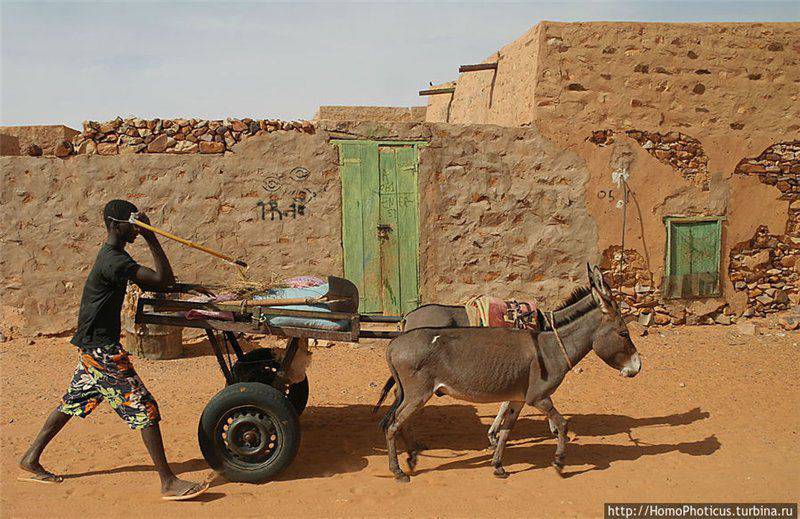
The number of household slaves in Mauritania is estimated at about 500 thousand people. That is, slaves make up about 20% of the country's population. This is the largest indicator in the world, but the problematic situation lies in the fact that the cultural and historical specificity of the Mauritanian society, as already mentioned above, does not preclude such a fact of social relations. Slaves do not want to leave their masters, but on the other hand, the fact of slaves stimulates their owners to purchase new slaves, including children from poor families who do not want to become concubines or house cleaners. In Mauritania, there are human rights organizations that struggle with slavery, but their activities encounter numerous obstacles on the part of slave owners, as well as the police and special services - after all, among the generals and senior officers of the latter, many also use the labor of free domestic servants. The Government of Mauritania denies the fact of slavery in the country and argues that domestic work is traditional for Mauritanian society and the majority of domestic servants are not going to leave their masters. A similar situation is observed in Niger, in Nigeria and Mali, in Chad. Even the law enforcement system of European states cannot serve as a full-fledged obstacle to domestic slavery. After all, migrants from African countries bring the tradition of domestic slavery with them to Europe. The well-to-do families of Moorish, Malian, Somali origin are dismissed from their home countries by servants, who, most often, are not paid money and who may be subjected to ill-treatment by their masters. Repeatedly, the French police released from domestic captivity immigrants from Mali, Niger, Senegal, Congo, Mauritania, Guinea and other African countries, who, more often than not, fell into domestic slavery as a child, or rather, their own parents sold them to the rich compatriots perhaps wishing children well and good - to avoid total poverty in their home countries through living in rich families abroad, even as a free servant.
Domestic slavery is widespread in the West Indies, primarily in Haiti. Haiti is perhaps the most disadvantaged country in Latin America. Despite the fact that the former French colony became the first (except for the USA) country of the New World to achieve political independence, the standard of living of the population in this country remains extremely low. In fact, it is socio-economic reasons that encourage Haitians to sell their children to wealthier families as domestic servants. According to independent experts, currently at least 200-300 thousands of Haitian children are in “domestic slavery”, which on the island is called the word “restores” - “service”. How the life and work of the “restorer” will pass depends primarily on the prudence and benevolence of its owners or on their absence. Thus, the “restorer” can be treated as a younger relative, and can be turned into an object of bullying and sexual harassment. Of course, in the end, most slave children are still subjected to ill-treatment.
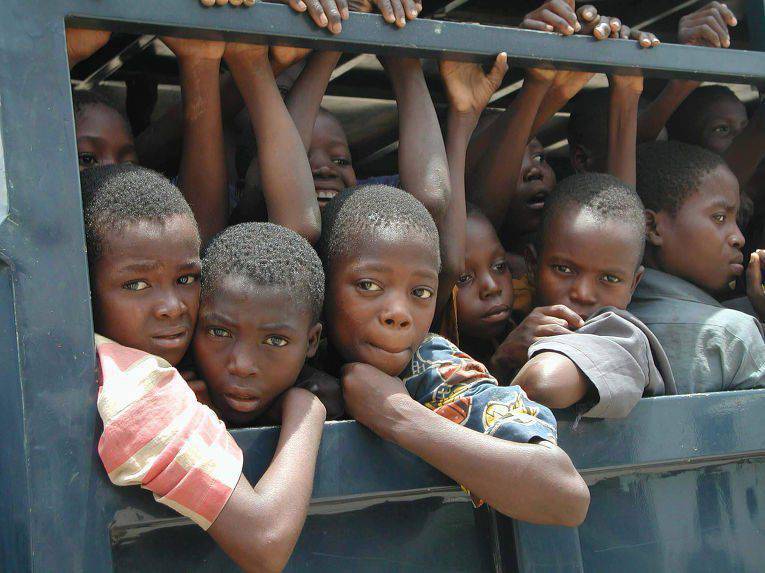
Child labor in industry and agriculture
One of the most common types of free slave labor in the third world countries is child labor in agricultural work, in factories and mines. In total, no less than 250 of millions of children are in operation in the world, and 153 million children are exploited in Asian countries, and 80 million - in Africa. Of course, not all of them can be called slaves in the full sense of the word, since many children in factories and plantations still receive wages, even beggars. But there are cases when free child labor is used, and children are bought from their parents specifically as free workers. So, the labor of children is used on the plantations of cocoa beans and peanuts in Ghana and Cote d-Yvoire. Moreover, the bulk of the slave children enter these countries from the neighboring poorer and more problematic states - Mali, Niger and Burkina Faso. For many small inhabitants of these countries, working on plantations where they give food is at least some opportunity to survive, since it is not known how their lives would be in parental families with a traditionally large number of children. It is known that in Niger and Mali - one of the highest birth rates in the world, with the majority of children born to peasant families, who themselves can barely make ends meet. Droughts in the Sahel, destroying crops of agricultural products, contribute to the impoverishment of the peasant population of the region. Therefore, peasant families are forced to attach their children to plantations and mines - only to "throw off" them from the family budget. In 2012 was Burkina Faso police, with the help of Interpol officers, freed children - slaves who worked in a gold mine. Children worked in mines in dangerous and unsanitary conditions, without receiving wages for it. A similar operation was conducted in Ghana, where the police also carried out the release of children working in the field of sexual services. A large number of children are enslaved in Sudan, Somalia and Eritrea, where their work is used primarily in agriculture. Nestle, one of the largest producers of cocoa and chocolate, is accused of using child labor. Most of the plantations and enterprises owned by this company are located in West African countries that actively use child labor. Thus, in Côte d'Ivoire, which gives 40% of the world crop of cocoa beans, at least 109 thousands of children work on cocoa plantations. Moreover, working conditions on the plantations are very difficult and are currently recognized as the worst in the world among other options for the use of child labor. It is known that in 2001 about 15, thousands of children from Mali were victims of the slave trade and were sold on cocoa plantations in Cote d'Ivoire. More 30 000 children from Côte d'Ivoire itself also work on agricultural production on plantations, and 600 000 children also work on small family farms, and among the latter there are both relatives of the owners and acquired servants. In Benin, the labor of at least 76 000 children is used on plantations - slaves, among which are natives of this country and other countries of West Africa, including the Congo. Most Beninese slave children are engaged in cotton plantations.
Child labor is widely used in India, Pakistan, Bangladesh and some other countries in South and Southeast Asia. India ranks second in the world in the number of child workers. Over 100 million Indian children are forced to work to earn their own food. Despite the fact that officially child labor in India is prohibited, it is widespread. Children work at construction sites, in mines, at brick factories, on agricultural plantations, at enterprises and workshops of semi-handicraft production, in the tobacco business. In the state of Meghalaya in the north-east of India, in the coal basin of Jayntiya, there are about two thousand children working. Children from 8 to 12 years and teenagers 12-16 make up лет from an eight-thousand miners contingent, but receive two times less than adult workers. The average daily salary of a child at the mine is no more than five dollars, more often three dollars. Of course, there is no question of observance of safety measures and sanitary standards. Recently, Indian children are rivaled by arriving migrant children from neighboring Nepal and Myanmar, who value their work even cheaper than three dollars a day. At the same time, the social and economic situation of many millions of families in India is such that without employment of children for work they simply cannot survive. Indeed, in a family there can be from five and above children - despite the fact that adults may not have work or receive very little money. Finally, we must not forget that for many children from poor families, working at an enterprise is also an opportunity to get some kind of shelter, since there are millions of homeless people in the country. Only in Delhi are hundreds of thousands of homeless people who have no shelter and live on the street. Child labor is also used by large multinational companies, which, precisely because of the cheap labor force, endure their production in Asian and African countries. So, in the same India only on the plantations of the infamous company Monsanto employs at least 12 thousands of children. In fact, they are also slaves, despite the fact that their employer is a world-famous company created by representatives of the “civilized world”.
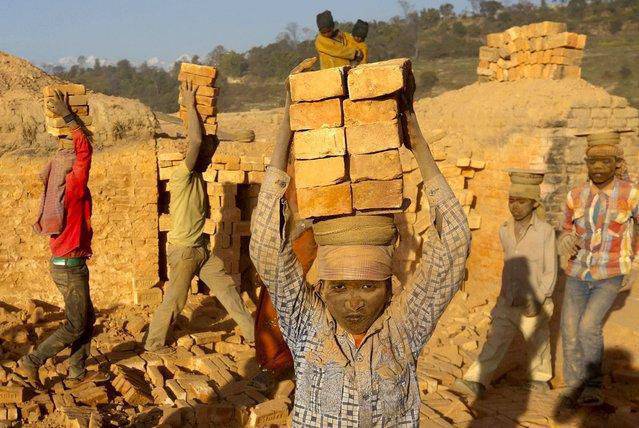
In other countries of South and Southeast Asia, child labor is also actively used in industrial enterprises. In particular, in Nepal, despite the law in force with 2000, prohibiting the recruitment of children up to 14 years, in fact, children constitute the majority of the working people. Moreover, the law implies the prohibition of child labor only on registered enterprises, and the majority of children work on unregistered agricultural farms, in handicraft workshops, home helpers, etc. Three quarters of working young Nepalis are engaged in agriculture, with girls working mostly in agriculture. Also, child labor is widely used in brick factories, despite the fact that brick production is very harmful. Also, children work in the quarries, perform work on sorting garbage. Naturally, safety standards at such enterprises are also not complied with. The majority of working Nepalese children receive neither secondary nor even primary education and are illiterate - the only possible life for them is unskilled hard work until the end of their lives.
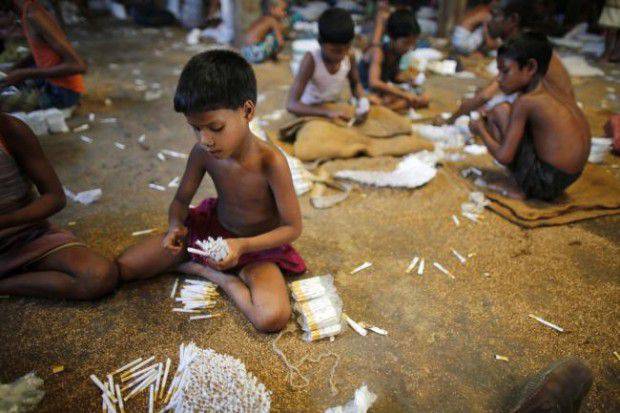
In Bangladesh, 56% of the country's children live below the international poverty line — at 1 dollars a day. This leaves them with no choice but to work on heavy production. 30% of Bangladeshi children under the age of 14 years are already working. Almost 50% of Bangladeshi children drop out of school before leaving primary school and go to work - to brick factories, balloon manufacturing enterprises, agricultural farms, etc. But the first place in the list of countries most actively using child labor, rightfully belongs to neighboring India and Bangladesh Myanmar. Every third child between 7 and 16 years works here. Moreover, children are employed not only in industrial enterprises, but also in the army - as army movers, subjected to harassment and bullying by soldiers. There have even been cases of using children to “mine” minefields — that is, children were released on the field to find out where there are mines and where there is free passage. Later, under pressure from the world community, the military regime of Myanmar went to a significant reduction in the number of children - soldiers and military servants in the country's army, but the use of slave labor by children in enterprises and construction sites in the field of agriculture continues. The bulk of Myanmar children are used to collect rubber in rice and reed plantations. In addition, thousands of children from Myanmar migrate to neighboring India and Thailand in search of work. Some of them end up in sexual slavery, others become free labor in the mines. But those who are sold to households or to tea plantations are even jealous, because the working conditions there are disproportionately easier than in mines and mines, and they pay even more outside Myanmar. It is noteworthy that children do not receive wages for their work - parents receive it for them, who themselves do not work, but act as guards for their own children. In the case of the absence or minority of children, women work. Over 40% of children in Myanmar do not attend school at all, but devote all their time to work, acting as family breadwinners.
Slaves of war
Another type of use of de facto slave labor is the use of children in armed conflicts in third world countries. It is known that in a number of African and Asian countries there is a developed practice of buying, and often abducting, children and teenagers in poor villages, with a view to their subsequent use as soldiers. In the countries of West and Central Africa, at least ten percent of children and adolescents are forced to serve as soldiers in the formations of local rebel groups, and even in government forces, although the governments of these countries, of course, in every possible way conceal the fact that there are children in their armed units. It is known that children are the soldiers most in Congo, Somalia, Sierra Leone, and Liberia.
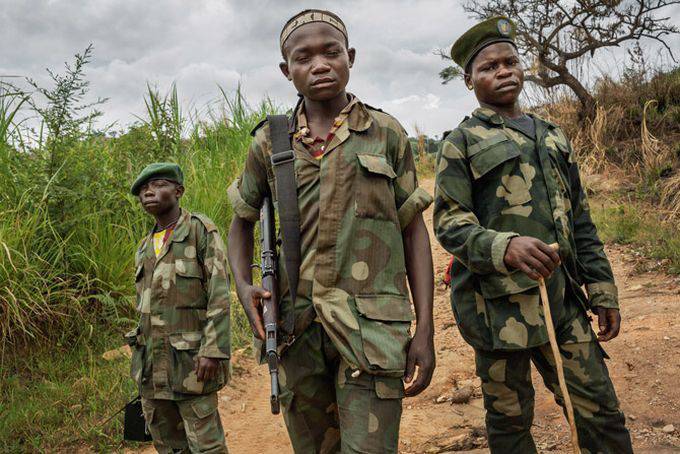
During the Civil War in Liberia, at least ten thousand children and adolescents took part in the fighting, about the same number of child soldiers fighting during the armed conflict in Sierra Leone. In Somalia, adolescents up to 18 years make up almost the bulk of the soldiers and government forces, and the formations of radical fundamentalist organizations. Many of the African and Asian "child soldiers" after the end of hostilities can not adapt and end their lives through alcoholics, drug addicts and criminals. There is a widespread practice of using children forcibly captured in peasant families - soldiers in Myanmar, Colombia, Peru, Bolivia, and the Philippines. In recent years, child soldiers have been actively using religious-fundamentalist groups fighting in West and Northeast Africa, the Middle East, Afghanistan, as well as international terrorist organizations. Meanwhile, the use of children as soldiers is prohibited by international conventions. In fact, the forced recruitment of children for military service is not much different from going into slavery, only children are at an even greater risk of death or loss of health, and also endanger their psyche.
Slave labor of illegal migrants
In those countries of the world that are relatively developed economically and are attractive to foreign labor migrants, the practice of using the free labor of illegal migrants is widely developed. As a rule, illegal labor migrants entering these countries, due to the lack of documents permitting them to work, and even identity documents, cannot fully protect their rights, be afraid to contact the police, which makes them easy prey for modern slave owners and slave traders. Most of the illegal migrants work in construction sites, manufacturing enterprises, in agriculture, while their work may not be paid or paid very poorly and with delays. Most often, the slave labor of migrants is used by their own tribesmen, who arrived in the host countries earlier and created their own business during this time. In particular, the representative of the Ministry of Internal Affairs of Tajikistan in an interview with the Russian service of the Air Force said that most of the crimes related to the use of slave labor by immigrants from this republic are also committed by natives of Tajikistan. They act as recruiters, middlemen, and human traffickers and supply free labor from Tajikistan to Russia, thereby deceiving their own countrymen. A large number of migrants who turn for help to human rights structures, over the years of free work in a foreign land, not only did not earn money, but also undermined their health, even becoming disabled as a result of the terrible working and living conditions. Some of them were subjected to beatings, torture, harassment, and cases of sexual violence and harassment against migrant women and girls are not uncommon. Moreover, these problems are common to most countries of the world where a significant number of foreign labor migrants live and work.
In the Russian Federation, free labor of illegal migrants from the republics of Central Asia, primarily Uzbekistan, Tajikistan and Kyrgyzstan, as well as from Moldova, China, North Korea, and Vietnam is used. In addition, there are known facts of the use of slave labor and Russian citizens - both at enterprises and in construction firms, and in private subsidiary farms. Such cases are stopped by the law enforcement agencies of the country, but it is hardly possible to say that abductions of people and, moreover, free labor in the country will be eliminated in the foreseeable time perspective. According to the report on modern slavery, presented in 2013, in the Russian Federation there are about 540 thousands of people whose position can be characterized as slavery or debt bondage. However, on a per thousand population basis, these are not so big indicators and Russia ranks only 49 in the list of countries in the world. Leading position in the number of slaves per thousand occupy: 1) Mauritania, 2) Haiti, 3) Pakistan, 4) India, 5) Nepal, 6) Moldova, 7) Benin, 8) Côte d'Ivoire, 9) The Gambia, 10) Gabon.
Illegal labor of migrants brings a lot of problems - both to the migrants themselves and to the economy of the host country. After all, the migrants themselves turn out to be completely unwarranted workers who can be deceived, not paid their wages, settled in inappropriate conditions or not ensure compliance with safety at work. At the same time, the state also loses, since migrants - illegal immigrants do not pay taxes, are not registered, that is - officially are "non-existent". Due to the presence of illegal migrants, the level of crime sharply increases, both due to the crimes committed by the migrants themselves against the indigenous population and each other, and due to the crimes committed against the migrants. Therefore, the legalization of migrants and the fight against illegal migration is one of the key guarantees of at least partial elimination of free and forced labor in the modern world.
Is it possible to eradicate the slave trade?
According to human rights organizations, in the modern world tens of millions of people are in actual slavery. These are women, adult men and teenagers, and very young children. Naturally, international organizations are trying to the best of their strength and capabilities to deal with the fact of slavery and slavery, which is terrible for the 21st century. However, this struggle does not actually give a real remedy. The cause of the slave trade and slavery in the modern world lies primarily in the socio-economic plane. In the same countries of the “third world” most of the slave children are sold by their own parents because of the impossibility of their maintenance. Overcrowding in Asian and African countries, mass unemployment, high birth rates, illiteracy of a significant part of the population - all these factors together contribute to the preservation of child labor, the slave trade, and slavery. The other side of the problem under consideration is the moral and ethnic disintegration of society, which occurs primarily in the case of “Westernization” without relying on its own traditions and values. When it is combined with socio-economic reasons, a very favorable ground arises for the flourishing of mass prostitution. Thus, many girls in resort countries become prostitutes on their own initiative. At least, for them it is the only opportunity to earn money on the standard of living that they are trying to lead in Thai, Cambodian or Cuban resort towns. Of course, they could have stayed in their native village and lead the way of life of their mothers and grandmothers while farming, but the spread of mass culture and consumer values reaches even the remote provincial regions of Indochina, not to mention the Central American resort islands.
Until the socio-economic, cultural, political causes of slavery and the slave trade are eliminated, it will be premature to talk about eradicating these phenomena on a global scale. If in European countries, in the Russian Federation, the situation can still be rectified by improving the efficiency of law enforcement, limiting the scope of illegal labor migration from and to the country, then in the Third World countries, of course, the situation will remain unchanged. It is possible - only aggravated for the worse, given the disparity between the rates of demographic and economic growth in most African and Asian countries, as well as the high level of political instability associated with the rampant criminality and terrorism.
- P P 'SЊSЏ RџRѕR "RѕRЅSЃRєRёR№
- http://afroforum.ru/, http://news-tomorrow.ru/, http://werkgroepcaraibischeletteren.nl/, http://daypic.ru/, http://prikol.bigmir.net/
Information